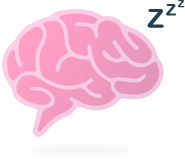Home
Halo Effect definition
The Halo Effect is a cognitive bias that affects our perceptions, leading us to base our judgments on a selective amount of information we have concerning something or someone. We often tend to use just our first impressions to create a generalised idea of what someone or something is like in totality. For example, we often see someone in a positive light, arbitrarily awarding them many positive characteristics based solely on one positive trait we know to be true, whether or not this one trait is in any way related to the current context or not. In other words, we attribute positive characteristics to people or objects based on just one observation.
This cognitive bias was theorised by Thomdike in 1920 and later proved by Asch (1946) and Clifford (1975). Clifford demonstrated how people considered to be more attractive were often also deemed to be more intelligent as well despite the two factors having no correlation in reality. During his experiment, teachers were shown photos of unknown pupils and asked to make assumptions on several different elements of their characters (intelligence, likelihood of academic success, etc.). The results showed that when given photos of more “attractive” pupils, the teachers described them as more likely to be intelligent or successful than others. There was no basis for these presumptions other than the fact that the one “positive” characteristic they had to go on (in this case, the attractive physical appearance) led them to subconsciously attribute other positive characteristics to these pupils.
However, the Halo Effect also works inversely. The “Devil Effect” shows how we are also likely to judge people negatively based on one single negative attribute. For example, we may demonstrate a negative sentiment towards someone that we don't even know simply due to the fact that they hang out with a crowd of people we don’t like, or inversely have a negative opinion of a whole group of people simply because one person we don’t like is included in it.
The Halo Effect also has huge significance for brands and businesses. For example, a brand that is well-known for having one particular quality product will find that all of its other products are also assumed to be of a similar quality even if this theory hasn’t been tested. Similarly, when promoting a certain item or service, the good publicity generated will be attributed to the brand as a whole so can have a much wider, more positive impact than a particular advertising campaign merited. In this way, certain marketing strategies use just one or two particular positive elements (such as a client testimony or a popular celebrity endorsement) to cast an overall positive light on their brand image.

Oops, you have reached your limit of 1 free tactic per hour
To get unlimited access to our 250+ tactics,
Join our FREE mailing list
Or wait 00:59:58





